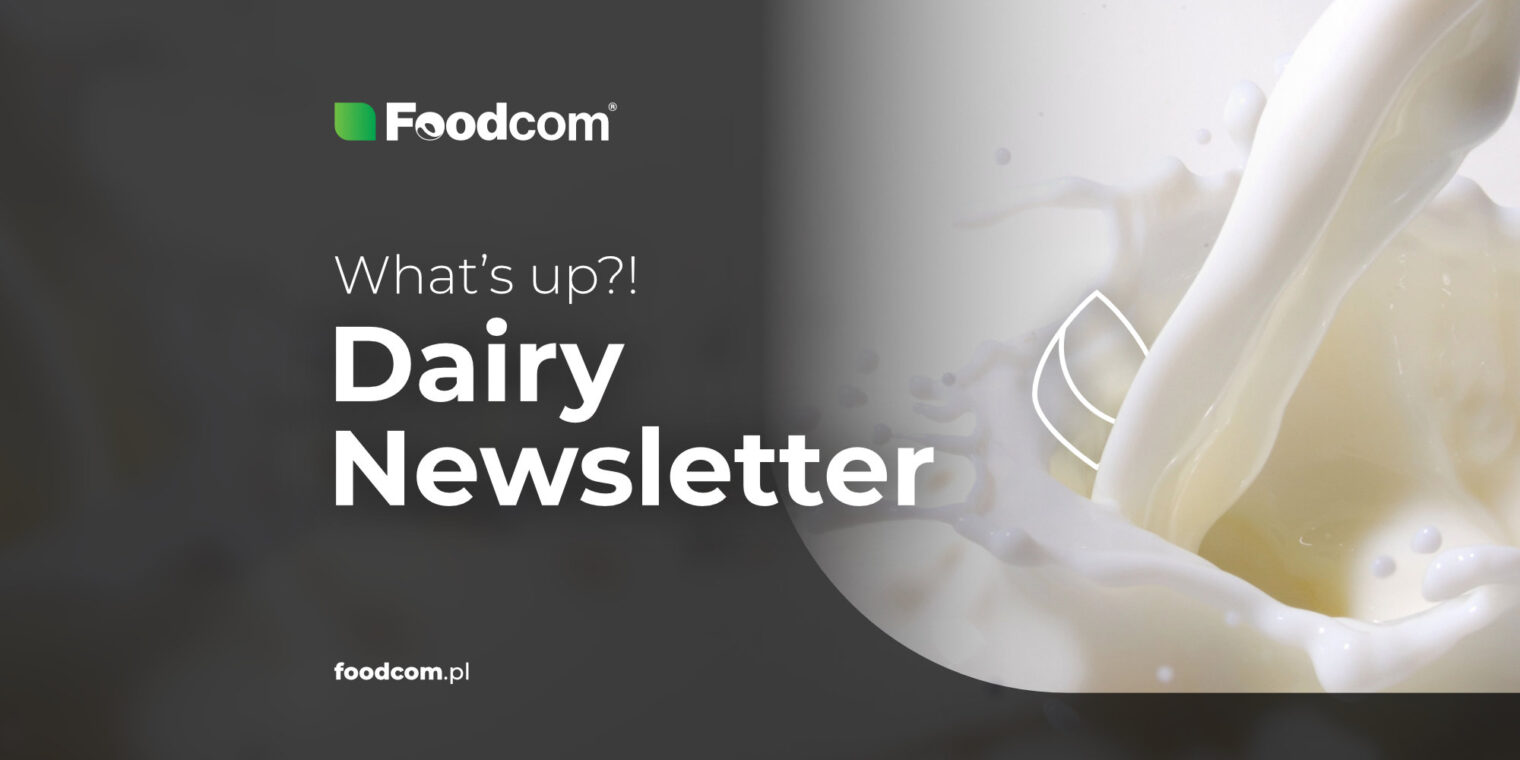Résumé
Table des matières
Quite stable and calm market for dairy products this week. With firm milk prices and warmer weather in Europe, it is hard to make a strong forecast. In the case of cheeses, imports from Asia are slowly shifting to Oceania as the U.S. offers much higher prices and better logistical preparation. For isolates, there is competition for lower prices from countries outside the EU, but they do not have sufficient quantities of product to offer. Market participants are wondering what will happen in the following weeks, what volumes of products will be booked, and most importantly – what quantities of milk will be available. Continue reading to learn more.
With us, you’ll never miss a thing!
All products featured in this newsletter are available for purchase. Visit our website by clicking on the image of the product of interest and fill out the contact form.
Due to a quiet trading week and lower SMC rates, prices have stabilized. At present, we do not see a tendency of the skimmed milk easing much further. However, due to the drought in the current climate such dues translate in the decrease in milk supply, therefore we might see another month of product’s prices staying stable.
WPC 80 is more visible on the market. The shift in the production of WPC 80 can be seen in the market, as the availability of the product has undergone a slight correction. The presence of cheaper concentrate in the market is noticeable, but we assume that this is a result until the limits are reached. Demand has increased for WPI, of which prices that were considered unsatisfactory to some lately, but these are now staying with us for a moment, as people are beginning to accept them. Exporting countries outside the EU are looking for isolates, indicating that there is a lower product availability. In regard to whey isolate, availability is very limited, as producers had been selling out several weeks in advance. Furthermore, demand has remained steady, the availability of WPC80 from Eastern Europe has increased over the past two weeks. In recent months, trade rates have settled at a level that was not really acceptable. Now we see that they will stay with us for a while, as people have accepted the current prices.
Last week, we noticed a trend in Dutch cheeses keeping stable. The easing on the market is most likely due to the traders offering the products at a different rate, though spot milk prices stay firm. However, we’ve witnessed factories offering milk not in line with the current market situation. There has begun the questioning if the delay in production of cheese could mean unavailability of the product.
In the case of butter, there is a clear difference between prices in Eastern and Western Europe. In the West, the price of butter varies between 7250 and 7300, while customers on CEE expect prices of 7050 – 7100.
The market for Cream has changed its course slightly in the last week, with a small drop in prices. Uncertainty about the fat content of milk remains, as producers expect a further seasonal decline. In the U.S. demand for cream is present, but some butter and ice cream production schedules have been reduced in response to staffing shortages.
Prices for SMC have declined during the assessment period, but the difference is slight. In the American market, milk production is somewhat inconsistent across the country, but production is trending generally steady to lower. Hot temperatures are affecting cow welfare and contributing to a decline in milk production at the farm level.
With us, you’ll never miss a thing!
All products featured in this newsletter are available for purchase. Visit our website by clicking on the image of the product of interest and fill out the contact form.
SMP
Due to a quiet trading week and lower SMC rates, prices have stabilized. At present, we do not see a tendency of the skimmed milk easing much further. However, due to the drought in the current climate such dues translate in the decrease in milk supply, therefore we might see another month of product’s prices staying stable.
WPC
WPC 80 is more visible on the market. The shift in the production of WPC 80 can be seen in the market, as the availability of the product has undergone a slight correction. The presence of cheaper concentrate in the market is noticeable, but we assume that this is a result until the limits are reached. Demand has increased for WPI, of which prices that were considered unsatisfactory to some lately, but these are now staying with us for a moment, as people are beginning to accept them. Exporting countries outside the EU are looking for isolates, indicating that there is a lower product availability. In regard to whey isolate, availability is very limited, as producers had been selling out several weeks in advance. Furthermore, demand has remained steady, the availability of WPC80 from Eastern Europe has increased over the past two weeks. In recent months, trade rates have settled at a level that was not really acceptable. Now we see that they will stay with us for a while, as people have accepted the current prices.
Gouda/Edam
Last week, we noticed a trend in Dutch cheeses keeping stable. The easing on the market is most likely due to the traders offering the products at a different rate, though spot milk prices stay firm. However, we’ve witnessed factories offering milk not in line with the current market situation. There has begun the questioning if the delay in production of cheese could mean unavailability of the product.
Butter
In the case of butter, there is a clear difference between prices in Eastern and Western Europe. In the West, the price of butter varies between 7250 and 7300, while customers on CEE expect prices of 7050 – 7100.
Cream
The market for Cream has changed its course slightly in the last week, with a small drop in prices. Uncertainty about the fat content of milk remains, as producers expect a further seasonal decline. In the U.S. demand for cream is present, but some butter and ice cream production schedules have been reduced in response to staffing shortages.
SMC
Prices for SMC have declined during the assessment period, but the difference is slight. In the American market, milk production is somewhat inconsistent across the country, but production is trending generally steady to lower. Hot temperatures are affecting cow welfare and contributing to a decline in milk production at the farm level.
Catégories







